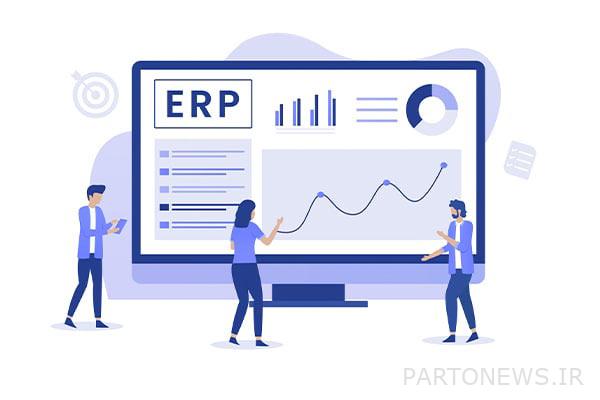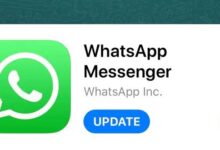What is ERP and why do you need it?

—————- advertisement report —————–
ERP stands for Enterprise Resource Planning and means Enterprise Resource Planning. ERP is software that manages a company’s financial, business, reporting, production, and human resource activities.
Most companies have a financial and operational system, but most other software can’t go beyond day-to-day business processes or help future business growth. soft App Program tiny Production (ERP) will grow your business.
As companies expand and their needs change, so do systems. We define what ERP is and why it’s smart to have software that fits your business needs.
The ERP system integrates various organizational systems and facilitates error-free transactions and production, thereby increasing the efficiency of the organization. However, developing an ERP system is different from traditional system development. ERP systems run on a variety of computer hardware and network configurations, typically using a database as the information repository.
What is ERP?
Historically, ERP systems were integrated suites that operated in isolation. Each system required expensive, complex, and customized code to meet unique business needs such as adopting new technology or optimizing processes. or even prevents it.
What makes today’s ERP software different is that it brings all these different processes together in one fluid system. It not only provides data connectivity in your ERP system, but also in productivity tools, e-commerce and even customer engagement solutions to help you integrate all your data for better insights that help you optimize your processes across your entire business. It helps, connect.
ERP brings continuity and flexibility to your business and processes, helping you innovate at a rapid pace today while preparing your business for the future.
What business functions benefit from ERP?
ERP can cover many core functions throughout your organization
Some of the key business functions are:
1. Trade
Today’s retailers face many challenges and an ERP system can provide a complete solution that integrates back office, in-store and digital experiences. Through AI recommendations, customers will have a more personalized and seamless shopping experience, while retailers can increase employee productivity, help reduce fraud and grow their business.
2. Investment
Modern ERP helps you increase your profitability while maintaining compliance. It offers AI-powered dashboards and insights that give you an overview of your finances to help you access real-time information anytime, anywhere. It also helps you reduce manual data entry by automating day-to-day tasks and includes tracking capabilities that help your business comply with regulations.
3. Human resources
Modern solutions offer ways to manage company data and streamline employee management tasks such as payroll, recruiting and other tasks. You’ll be in a better position to help retain, hire, and empower employees while tracking employee performance and identifying HR problems before they happen.
4. Construction
It improves business communication functionality, automates daily processes through robotic process automation, and provides manufacturers with the ability to meet customer needs and manage resources with access to real-time data. The solution also optimizes project and cost management as well as production planning.
5. Supply chain
If your company is still manually entering information and trying to track your inventory, you can easily save time and money by automating these processes with ERP. Modern solutions also offer dashboards, business intelligence and even Internet of Things (IoT) technology to help you take control of your inventory management.
Why should we use ERP?
If you’re reading this and struggling with your legacy system, you probably already know that an implementation is in your future, but here are some signs that you definitely need a new ERP starting today. :
1- Basic principles do not allow you to grow:
Maybe you’re doing well with the basics, but if your current software is limiting your market expansion and your ability to grow on a global scale, it’s time for a better system.
2- You are dealing with different systems:
As technology changes, you find that your disparate systems don’t work well together. You may find that your new accounting software isn’t compatible with your old HR system, and you’re tired of wasting time and resources trying to create a solution.
3- You cannot meet the customer’s expectations:
If your employees and customers are mobile and your system doesn’t accommodate them, it’s time to invest in something that meets everyone’s needs. If you feel like you can’t invest in meeting your customer’s expectations, and you’re unwilling to give your employees the tools they need to succeed, you’ll lose them to a competing business.
as a result ERP It includes a wide range of different activities that improve one’s performance Organization leads and manages all the data and processes of an organization in a software system in the form of a database in a continuous, regular and accurate manner.
Better productivity ERP
The importance of ERP lies in increasing the overall productivity of your business. ERP software is able to eliminate repetitive tasks, manual entries and the possibility of errors. Following the implementation of ERP software helps to streamline all business processes and increase efforts. This helps you save time and focus on other operations and business processes wherever there is scope for improvement.
History of ERP software
The beginning of this industry dates back to the last 100 years, Ford engineer Whiteman Harris designed a new model of management and scheduling called EOQ.
Manufacturing companies used EOQ for several decades, until finally in 1964, by using a special material planning solution (MRP) and combining it with EOQ, they brought about great changes in this field, this tool was widely It was used until 1983 when its second version named ||MRP became available.
Finally, the term enterprise planning was invented by Gartner in 1990. This software continued to be used by material requirements planning (MRP) until it was developed by IBM engineer Joseph Orlicki as a system for calculating the materials and components needed to produce a product. In 2000, Gartner introduced the idea of ERP II. introduced to refer to Internet-enabled systems that can receive data from other sources, including front-office applications, such as customer relationship management (CRM), e-commerce and marketing automation, and back-office applications such as supply chain management ( SCM) and Human Capital Management (HCM).
This was a significant improvement because the more information entered into the ERP system, the easier it was to identify and solve problems and take advantage of opportunities.
Today, leading ERP systems are vast repositories of information capable of generating reports that can address the performance of every aspect of a business, from sales and marketing to product development to human resources and operations. . There are countless applications available that are designed for different industries, business models, and challenges, and ERP serves as the command center for what can be a vast network of software.

The future of ERP
Major technology trends, such as artificial intelligence (AI) and the Internet of Things (IoT), will shape the future of ERP systems. In the short term, ERP solutions can use machine learning—a subset of artificial intelligence in which the system learns to identify patterns in data to draw conclusions—to eliminate manual tasks and predict future business trends. Machine learning absorbs new data and feedback to become smarter and more effective over time.
ERP systems have come a long way, and machine learning, the Internet of Things, and other innovations will drive continued improvements and shape the history of ERP in the coming years—65 percent of CTOs predict they will integrate AI into their ERP by 2022.
What is ERP II?
ERP II refers to Internet-enabled ERP systems, including cloud solutions, that use web connections to send and receive information from various applications. In 2000, Gartner introduced the term “ERP II” to name a new generation of ERP systems.
How does artificial intelligence work in ERP?
Artificial intelligence (AI) is a technology that simulates human intelligence. This is similar to machine learning or natural language processing where technology learns from data and knowledge to understand human voice commands. You may be familiar with this technology on a smartphone when you call Siri or Alexa.
However, artificial intelligence now has wider scope and implications for the manufacturing industry and more specifically ERPs. Artificial intelligence technology is embedded directly into ERP systems that you can learn from and then help them automate routine processes and create enhanced user experiences.
By using AI-enabled ERP systems, you can accelerate the adoption of chatbots to answer all customer questions and comments. This will give special attention to customer service so that they will be able to see the queries of customers in real time. Virtual assistants are available to answer all customer questions.

